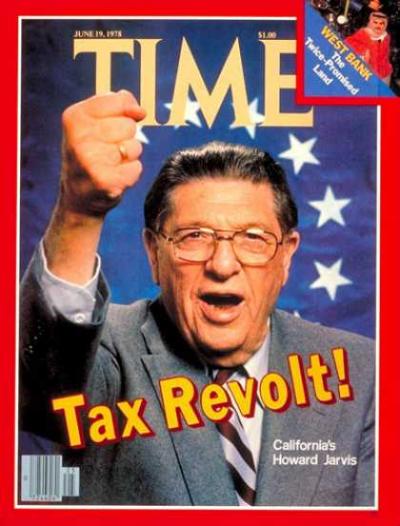Firm Republican opposition to tinkering of any kind with the 1978 Prop. 13 is one reason voters may get no chance next year to decide whether to tax commercial and industrial land and buildings more than residential property.
“Very remote,” was how the state Senate’s GOP leader, Bob Huff of Glendora, described the chances of even one Republican voting for a so-called “split roll” measure now being carried by two Democratic state senators.
The GOP’s stance might have been only incidental last year when Democrats periodically held two-thirds majorities in both houses of the Legislature. But it can be decisive now since the Democrats are short of that benchmark in both the Senate and Assembly. It would take two-thirds votes in both houses to put the so-called split roll on the ballot without going the initiative route, with its circulated petitions and other complications. That would tax non-residential property based on current values rather than 1 percent of their latest purchase price, as dictated by Prop. 13.
So what? some ask. One recent survey cited by backers of the split roll found 75 percent of 104,000 voters polled favor withdrawing Prop. 13 protections from commercial property.
By a similar margin, voters would like changes in rules and definitions that sometimes prevent reassessment of non-residential property when it is sold.
Not a Cinch
Getting this passed via the initiative route looks easy, but looks can deceive. Vocal and well-funded opposition invariably emerges the moment any proposal arises to change Prop. 13 even in the slightest. Every such response plays on the fears of California homeowners, many of whom would be forced to sell if they lost Prop. 13 coverage that limits basic levies to 1 percent of the most recent purchase price, plus a 2 percent increase in that amount each year.
This law causes huge disparities in most neighborhoods. On a typical street in the San Fernando Valley, for example, a three-bedroom house last sold for $57,000 in 1975 pays an annual tax of less than $1,500. Across the street, a home with the identical floor plan purchased last year for more than $600,000 draws a property tax bill more than four times as high.
This may seem unfair, but it keeps older homeowners with fixed incomes in places they might otherwise have to leave. Even if they are liberal-leaning voters on other issues, those homeowners often respond to fear-mongering claims that any change to Prop. 13 must certainly lead to the end of their own protections.
Then there is political and financial reality. Circulating initiative petitions is expensive, even though last year’s ultra-low voter turnout caused a big drop in the number of signatures needed to put a measure on next November’s ballot. The number is based on a percentage of the vote in the latest general election.
It still will cost sponsors about $5 per signature to qualify any proposal, the total expense generally topping $2 million for each initiative next year.
Also seeking spots on that ballot will be at least three other measures that aim to increase taxes. All will compete for money from many of the same sponsors.
One proposal would more than double cigarette taxes to $2 per pack. Another would extend the temporary tax increases of the 2012 Prop. 30, a major factor in pulling California out of its once-perennial budget crises. A third measure still on the drawing board would impose an extraction levy on oil and natural gas drilled in California, putting this state on an equal footing with places like Texas and Oklahoma, where such taxes are the foundation of fat state budgets.
Taken together, those measures could produce more state revenue than the estimated $6 billion to $12 billion that might be raised via a split roll.
Because that money would support public employee salaries and pensions, these measures draw support from the Service Employees International Union. They would also fund education, thus helping the California Teachers Assn. None of those other plans arouses anything close to the heated opposition spurred by a split roll. So labor unions have not said, but they might feel it’s a safer investment to go after smaller game next year.
It all puts a vote on the split roll, once deemed virtually inevitable, very much in doubt.
Mr. Elias may be contacted at tdelias@aol.com. His book, “The Burzynski Breakthrough,” is now available in a soft cover fourth edition. For more Elias columns, visit www.californiafocus.net

